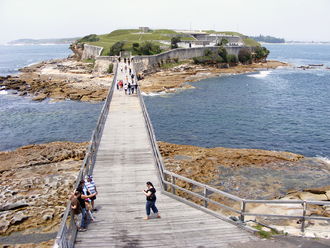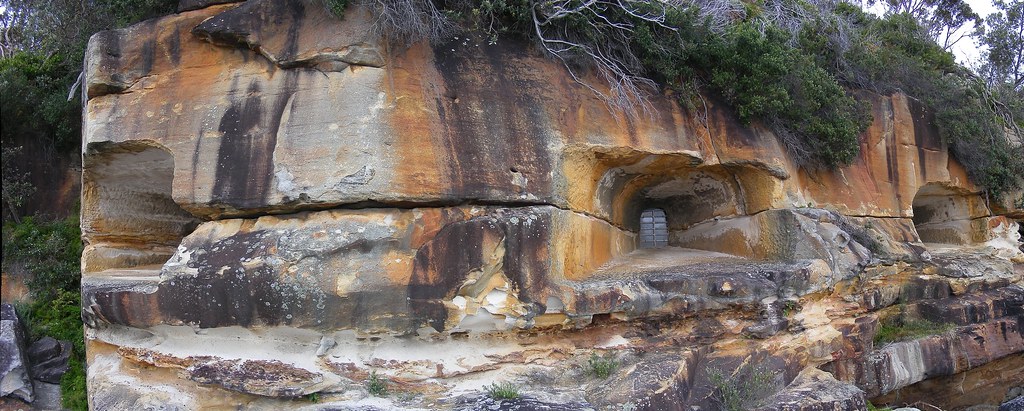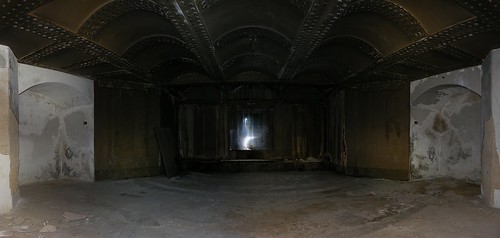History
The land on Shark Point was resumed from its private owners and construction of the battery began in 1871 and was completed in 1874 with an additional barracks being added in 1880. The site was designed under the supervision of colonial architect James Barnet who was responsible for designing several other harbour fortifications during this period. In 1872 three 80-pounder rifled muzzle-loading guns were installed.
In 1893 the fort was upgraded to hold a BL 9.2 inch (234 mm) Mk VI breech-loading 'counter bombardment' British Armstrong 'disappearing' gun. The Shark Point Battery was one of three such batteries protecting Sydney Harbour. The other two are the Ben Buckler Gun Battery at Bondi, and the Signal Hill Battery at Watsons Bay. The design of the batteries included a domed metal shield that covered each gun pit was intended to protect the gun from incoming shells. The Shark Point Battery's 9.2 inch gun's serial number was 7317. At some point the gun was removed and the battery converted to hold three 5-inch breech-loading guns.
The Shark Point battery formed part of the Sydney Harbour defences and was originally built at a time of fears of a Russian attack and other concerns such as in the withdrawal of British garrison troops, threats to British dependencies and increasing self reliance in defence matters. The fort worked in conjunction with various other forts located on Sydney Harbour that were also built in or around 1871. These forts included, the Middle Head Fortifications, the Georges Head Battery, the Lower Georges Heights Commanding Position and another small fort on Bradleys Head, known as the 'Bradleys Head Fortification Complex'.
In its last form, the battery consisted of three sandstone gun emplacements or pits with embrasures for the guns to fire through. These pits were connected by open passages and covered passages that led into underground chambers that consisted of a gunpowder magazine, a shell and artillery store and two shell and lamp recesses built of stone. The site had its own living quarters that included amenities for the workers manning the fort. The fort was surrounded by a picket fence with a sandstone base and another barbed wire fence for security. The fort also had its own jetty with connecting roads.
Shark/Steel Point at present consists of a three-gun battery. The passageways, tunnels, magazine store and barrack room are now partially buried. The stone lintel cover of the entry to the rear emplacement was smashed and the tunnel filled with debris, allowing water to seep in causing damage to the interior. The stonework of the lower emplacements and connecting passages are in good condition and there is still one gun emplacement located above ground.
The land on which the fort is located was granted to the state of New South Wales in 1980 and later became the responsibility of the New South Wales National Parks and Wildlife. A small portion of the land on which the fort is located is used as a degaussing station by the Royal Australian Navy.















